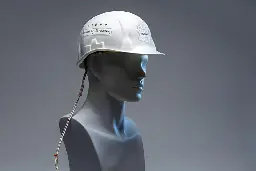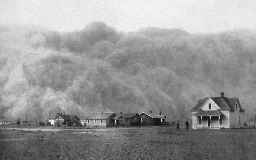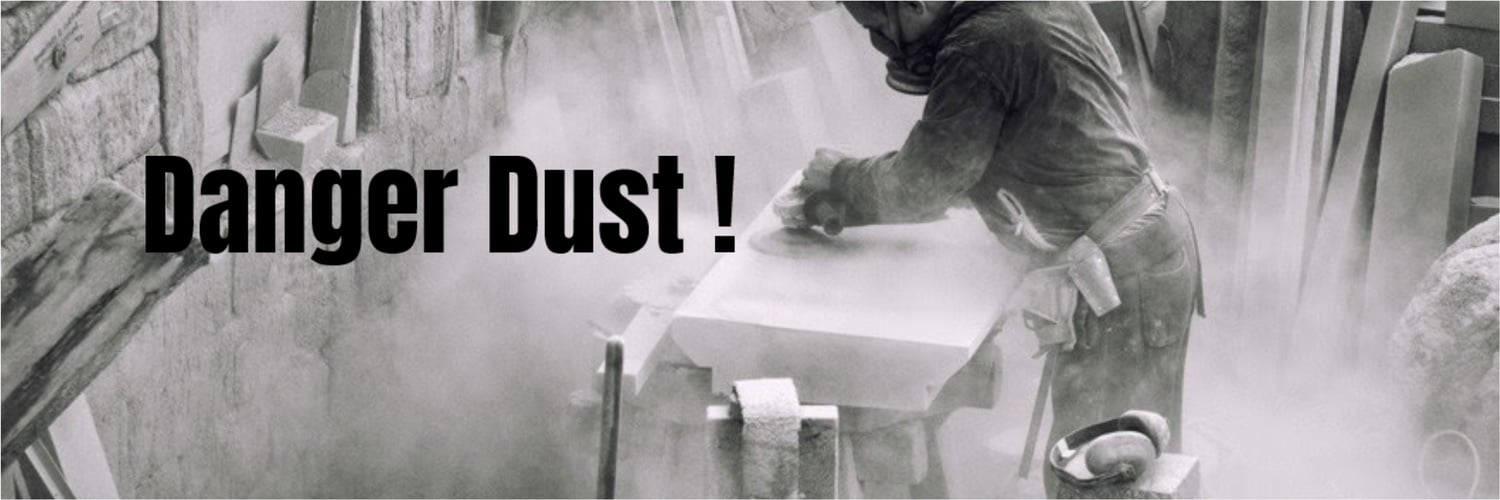
Danger Dust
- The Most Detailed Map of Cancer-Causing Industrial Air Pollution in the U.S.projects.propublica.org The Most Detailed Map of Cancer-Causing Industrial Air Pollution in the U.S.
Using the EPA’s data, we mapped the spread of cancer-causing industrial air emissions down to the neighborhood level. Look up your home to see if you and your loved ones are living in a hot spot.

It’s not a secret that industrial facilities emit hazardous air pollution.
A new ProPublica analysis shows for the first time just how much toxic air pollution they emit — and how much the chemicals they unleash could be elevating cancer risk in their communities.
- Colorless, odorless gas likely linked to alarming rise in non-smoking lung cancerwww.sciencedaily.com Colorless, odorless gas likely linked to alarming rise in non-smoking lung cancer
Although lung cancer is traditionally thought of as a 'smoker's disease,' a surprising 15-20% of newly diagnosed lung cancers occur in people who have never smoked, many of whom are in their 40s or 50s.

Doctors say this concerning rise in non-smoking lung cancer cases is likely linked to long-term, high exposures of radon gas. This colorless, odorless gas is emitted from the breakdown of radioactive material naturally occurring underground that then seeps through building foundations. The gas can linger and accumulate in people's homes and lungs silently unless they know to test for it.
- Infections after surgery are more likely due to bacteria already on your skin than from microbes in the hospital − new researchtheconversation.com Infections after surgery are more likely due to bacteria already on your skin than from microbes in the hospital − new research
Most infection prevention guidelines center on the hospital environment rather than the patient. But the source of antibiotic-resistant microbes is often from the patient’s own body.

Research comparing bacteria in the microbiome – those colonizing our noses, skin and other areas of the body – with the bacteria that cause pneumonia, diarrhea, bloodstream infections and surgical site infections shows that the bacteria living innocuously on our own bodies when we’re healthy are most often responsible for these bad infections when we’re sick.
Our results revealed that while the species of bacteria living on the back skin of patients vary remarkably between people, there are some clear patterns. Bacteria colonizing the upper back around the neck and shoulders are more similar to those in the nose; those normally present on the lower back are more similar to those in the gut and stool. The relative frequency of their presence in these skin regions closely mirrors how often they show up in infections after surgery on those same specific regions of the spine.
In fact, 86% of the bacteria causing infections after spine surgery were genetically matched to bacteria a patient carried before surgery.
- Scientists Invented a Bizarre New Material That Gets Tougher When You Hit Itwww.sciencealert.com Scientists Invented a Bizarre New Material That Gets Tougher When You Hit It
Electronic wearables and sensors could one day be made from a material that toughens up as it gets hit or stretched, thanks to new research carried out by a team from the University of California, Merced.
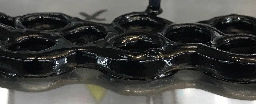
The new material was actually inspired by the corn starch used in cooking, which can be stirred when water is added. Unlike wet sand, which has a consistent viscosity whether mixed or punched, cornstarch slurry acts like a liquid when stirred gently and like a solid when punched quickly.
Personalized electronic prosthetics are another potential use case, and something the researchers have already experimented with. Eventually, artificial limbs could be 3D printed from this versatile material.
It's another reminder of the potential for new materials to be discovered and existing materials to be refined, and how they might change our futures – from the devices we use to the clothes we wear.
- What Is Pollution Doing to Our Brains? 'Exposomics' Reveals Links to Many Diseaseswww.scientificamerican.com What Is Pollution Doing to Our Brains? 'Exposomics' Reveals Links to Many Diseases
The new science of "exposomics" shows how air pollution contributes to Alzheimer’s, Parkinson’s, bipolar disorder and other brain diseases

The new science of "exposomics" shows how air pollution contributes to Alzheimer’s, Parkinson’s, bipolar disorder and other brain diseases
These particles, known as PM2.5 (particles less than 2.5 micrometers in diameter), can affect the lungs and heart and are strongly associated with brain damage.
A recent study showed that pesticides, paints, cleaners, and other personal care products are another major—and under-recognized—source of PM2.5 and can raise the risk for numerous health problems, including brain-damaging strokes.
Untangling the relationship between air pollution and the brain is complex. In the modern industrial world, we are all exposed to literally thousands of contaminants.
- Platelets: Helping in coagulation and driving inflammation
In the mid-19th century, they were first observed as small spheres in the blood, and by the turn of the century, their function in blood clotting, known as haemostasis, and the development of thrombosis were discovered. A few years later, the site of their formation in the bone marrow was also identified, where platelets are shed from their giant precursor cells, the megakaryocytes.
The biology of these small, nucleus-free cells, which are only one-thousandth of a millimetre in size and of which we have about 250 million in every millilitre of blood, has gradually evolved into a major research area.
It has become obvious that platelets have a plethora of functions beyond stopping bleeding or triggering heart attacks. As modulators of the immune system, they also drive inflammatory processes and thereby promote tissue damage in many disease settings.
- Second dust conference in the Earth's desert belt
The arid regions in the desert belt of the northern hemisphere extend from the Sahara in western Africa to the Middle East and the deserts of China. Millions of people in these regions suffer from the effects of dust on their health, flora, economy and climate.
In total, dust particles with a mass of around 1500 megatons are released into the atmosphere every year. The Sahara is thought to be the main source with around 1000 megatons.
Mineral dust plays a major role in the global climate because the dust particles floating in the atmosphere reflect sunlight and dim the sun's rays reaching the ground. In addition to this direct effect, there is also a so-called indirect aerosol effect: the particles act as cloud nuclei and influence cloud formation, which also has an impact on the Earth's radiation budget and can cool or warm depending on the type and height of the clouds.
In addition, there are many other effects whose significance has only been slowly understood in recent years: Chemical reactions can take place on the surface of the dust. Trace metals in mineral dust fertilize the ocean and thus drive many biogeochemical processes in the sea. Large dust outbreaks can affect local infrastructure such as photovoltaic systems.
Added to this are the effects on people's health, some of whom suffer from severe dust storms: Dust has a negative impact on the respiratory tract and can also transport bacteria and thus diseases.
- Bronchoconstriction damages airway epithelia by crowding-induced excess cell extrusion
Asthma is deemed an inflammatory disease, yet the defining diagnostic feature is mechanical bronchoconstriction.
Our findings show that bronchoconstriction causes epithelial damage and inflammation by excess crowding-induced cell extrusion and suggest that blocking epithelial extrusion, instead of the ensuing downstream inflammation, could prevent the feed-forward asthma inflammatory cycle.
- NASA Technology Helps Guard Against Lunar Dustwww.nasa.gov NASA Technology Helps Guard Against Lunar Dust - NASA
Using transparent electrodes and electric fields, EDS technology can electrically lift and remove dust from a variety of surfaces for space applications

Lunar regolith dust can get into gaskets and seals, into hatches, and even into habitats, which can pose a lot of issues for spacecraft and astronauts.”
Unlike dust particles on Earth, dust on the Moon’s surface is sharp and abrasive – like tiny shards of glass – because it hasn’t been exposed to weathering and elements like water and oxygen.
Simply brushing lunar regolith across surfaces can make the problem worse because it’s also very electrostatically charged and highly insulating.
- Why This Man is a Messiah for Hundreds of Tribals Dying Due to Incurable Silicosiswww.thebetterindia.com Why This Man is a Messiah for Hundreds of Tribals Dying Due to Incurable Silicosis
For the past 20 years, Jharkhand's Samit Kumar Carr has helped families of workers who died due to incurable silicosis get a compensation of Rs 13 crores.

She worked in a ramming mass industry. As part of this, she would be exposed to silica dust all day. I remember that whenever she would come home in the evening, she would be completely covered in dust — her hair, clothes, all her body. It would get a little difficult for us to recognise her. Sadly, Laxmi’s mother could not be saved. “She was just 33. All this pain was for Rs 80-100 wage per day.
Silicosis is an incurable lung disease caused by the inhalation of dust containing silica crystals found commonly in quartzite, granite, basalt, sandstone, agate, slate marble, and building materials like fire bricks and tiles. This exposes workers in dust-generating sites like factories, mining and construction sites to a high risk of contracting the disease, which leads to prolonged illness and painful death.
- The Invisible Enemy: How Silica Exposure Is Claiming Lives Among Steel Workers
As attention has been riveted on coal miners suffering from black lung disease, it’s important to realize that steel workers are also among those facing similar fates due to silica exposure.
Silica, the most abundant mineral in the earth’s crust, poses a significant health risk when its dust is inhaled during various industrial activities such as chipping, cutting, drilling, or grinding natural materials like soil, granite, slate, sandstone, among others.
Exposure to silica dust poses a significant risk of developing various progressive diseases. Inhalation of these tiny particles over time can lead to scarring and inflammation in the lungs,resulting in the formation of lung nodules, which could indicate the presence of lung cancer.
Moreover, the scarring can progress to the extent of stiffening the lungs, causing difficulty in breathing and ultimately leading to conditions such as pulmonary fibrosis or COPD. Additionally, silica exposure increases susceptibility to bacterial infections, including tuberculosis.
- Lungs of stone: How Silica has sickened a generation of quartz cutters - The World from PRXtheworld.org Lungs of stone: How Silica has sickened a generation of quartz cutters - The World from PRX
Quartz is used for countertops in millions of homes around the world — the manmade stone is popular for its beauty and durability. But for workers who make, cut and install quartz counters, it can be deadly. The World reported from Turkey, Spain and Australia — three stops along the quartz counterto...
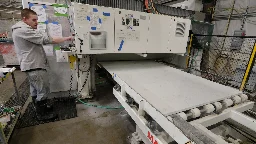
Quartz is used for countertops in millions of homes around the world — the manmade stone is popular for its beauty and durability. But for workers who make, cut and install quartz counters, it can be deadly. The World reported from Turkey, Spain and Australia — three stops along the quartz countertop supply chain — to learn more about silicosis, an incurable and often fatal lung disease caused by inhaling dust laden with excessive amounts of a mineral called silica.
Each worker received a filtered face mask every six months. But one by one, Girgin’s coworkers still fell ill with silicosis—a lung disease caused by breathing in dust from silica-laden materials. The immune system typically produces mucus as a protective measure, but eventually, the mucus clogs the lungs, which inevitably leads to suffocation.
Growing up in Çine, Girgin saw a neighbor get sick and die within a year.
There is no cure for silicosis.
- Minneapolis foundry failed to protect workers from breathing hazards, state inspectors say
Breathing in silica raises the risk of developing silicosis, which OSHA describes as "an incurable lung disease that can lead to disability and death." Inhaling the substance also raises the risk of lung cancer, chronic obstructive pulmonary disease or COPD and kidney disease, according to the agency.
Breathing carbon monoxide can cause a host of problems, including nausea, dizziness, weakness and disorientation.
- What could we build with lunar regolith?phys.org What could we build with lunar regolith?
It has often been likened to talcum powder. The ultra fine lunar surface material known as the regolith is crushed volcanic rock. For visitors to the surface of the moon it can be a health hazard, causing wear and tear on astronauts and their equipment, but it has potential. The fine material may be...

It has often been likened to talcum powder. The ultra fine lunar surface material known as the regolith is crushed volcanic rock. For visitors to the surface of the moon it can be a health hazard, causing wear and tear on astronauts and their equipment, but it has potential. The fine material may be suitable for building roads, landing pads and shelters. Researchers are now working to analyze its suitability for a number of different applications.
One of the first priorities would be to establish a suitable permanent landing area on the moon. Without it, every time a lander arrives, the fine regolith will get kicked up and disturbed and may very well play havoc with other equipment in the vicinity. The particles can be quite sharp too so it may be quite abrasive on equipment.
- After CPAP Recall, Philips Must Institute New Safeguards in Agreement With U.S. Justice Departmentwww.propublica.org After CPAP Recall, Philips Must Institute New Safeguards in Agreement With U.S. Justice Department
The settlement comes nearly three years after the company acknowledged that an industrial foam fitted inside its machines could degrade and release toxic substances into the masks worn by patients.

Philips Respironics must hire an independent safety monitor, undergo regular facility inspections for five years and pay part of its revenue to the federal government under the terms of an agreement with prosecutors filed in federal court in Pennsylvania, capping one of the most catastrophic medical device recalls in decades.
The company will also face a review of its testing on the millions of replacement machines that it sent to customers after the old ones were recalled in 2021.
- Therapy Insight: Scleritis And Its Relationship To Systemic Autoimmune Disease
The term scleritis describes a chronic inflammation that involves the outermost coat and skeleton of the eye. Disease can be isolated to the eye, but in up to half of affected individuals it occurs in the context of an immune-mediated systemic inflammatory condition, such as rheumatoid arthritis or Wegener's granulomatosis. Although uncommon, scleritis is often extremely painful, can lead to vision-threatening complications (and involvement of other ocular tissues), and is considered to confer an increased risk of mortality in patients with rheumatoid arthritis.
- Three’s Company: Coexistence of Silicosis, Scleroderma, and Sjogren Syndrome in a Single Patientwww.hindawi.com Three’s Company: Coexistence of Silicosis, Scleroderma, and Sjogren Syndrome in a Single Patient
We describe a patient who presented with silicosis, scleroderma, and Sjogren syndrome all at the same time. The diagnoses in this case are all associated with continuous exposure to crystalline silica at the patient’s workplace. The following report discusses this unique presentation.
We describe a patient who presented with silicosis, scleroderma, and Sjogren syndrome all at the same time. The diagnoses in this case are all associated with continuous exposure to crystalline silica at the patient’s workplace.
Over the past few years, environmental factors have been found to play a complementary and significant role in the initiation and propagation of different autoimmune diseases and can be linked to up to 70% of all autoimmune diseases.
Exposure to crystalline silica has also been found to be associated with the development of various autoimmune diseases including systemic lupus erythematosus (SLE), rheumatoid arthritis, systemic sclerosis, and antineutrophil cytoplasmic antibody (ANCA)-related vasculitis.
- Commentary: Silica—A Multisystem Hazardacademic.oup.com Commentary: Silica—A Multisystem Hazard
Silica has a long history. Inhalation of silica, a ubiquitous constituent of the Earth’s crust in the form of quartz, produces the singular inflammatory an
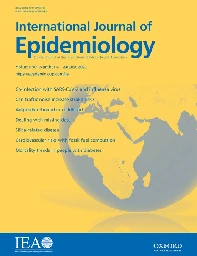
Identification and understanding of the role of silica in disease outside the lung have grown more slowly. Large mortality studies of silica-exposed populations have identified excess risk from renal disease and cardiovascular disease.
Of growing interest has been the role of silica in multisystem disease, notably rheumatoid arthritis, systemic sclerosis, systemic lupus erythematosus (SLE), small vessel vasculitis and others, in which autoimmunity is the unifying feature.
For SLE and small vessel vasculitis in men, there was arguably no dose-response trend beyond the ‘any silica’ threshold.
The multisystem nature of the silica hazard also has implications for medical practice. Specialists in fields other than respiratory medicine—renal medicine, dermatology and rheumatology—need to be on the alert, not least by taking a careful occupational history with knowledge of silica exposures.
Finally, autoimmunity widens the mechanistic complexity of silica toxicology. Variability in dose rate of silica, particle parameters such as size, charge and physicochemical structure, co-exposures and host factors require painstaking studies controlling for these variables to determine their joint effects. Such research has the potential not only to identify pathways to earlier identification and possible treatment of silicosis, but also to illuminate aspects of autoimmunity, tuberculogenesis and other disease processes.
- ANCA vasculitis and IgA nephropathy linked to silica exposureacademic.oup.com ANCA vasculitis and IgA nephropathy linked to silica exposure
Summary. There is a recognized association between silica exposure and Antineutrophil cytoplasmic antibodies (ANCA)-associated vasculitis (AAV); however, n
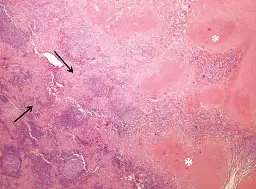
Key learning points
What is already known about this subject
Silica is known to be immunogenic and is associated with autoimmune diseases.
There is a known association between ANCA-associated vasculitis and silica exposure, although the exact mechanism of injury is not known.
There are only a few case reports describing the association of silica exposure and IgA nephropathy.
What this study adds
This is the first documented case report, to our knowledge, of co-existing ANCA-associated vasculitis and IgA nephropathy linked to hilar lymphadenopathy due to silica exposure.
This case highlights the relevance of occupation exposures in renal disease, and the immune-stimulatory effect of silica.
- About half of cancer drugs given accelerated approval don't show improved survival or quality of lifewww.statnews.com About half of cancer drugs given accelerated approval don't show improved survival or quality of life
About half of cancer drugs approved via accelerated approval fail to improve patient survival or quality of life in subsequent clinical trials, according to data presented at AACR.

For decades, the Food and Drug Administration’s accelerated approval pathway has helped companies get drugs for serious unmet medical needs to patients — and the market — sooner. But about half of cancer drugs approved via this route fail to improve patient survival or quality of life in subsequent clinical trials after more than five years of follow-up, according to new findings presented Sunday at the American Association for Cancer Research annual meeting.
The data come from an analysis of cancer drugs granted accelerated approval over the past decade. In some cases, failure to show clinical benefit didn’t stop the FDA from converting accelerated approvals into full approvals, and the authors note the agency’s conversion decisions have increasingly been based on less stringent evidence of a drug’s benefits.
- New study suggests we're likely underestimating the future impact of PFAS in the environmentphys.org New study suggests we're likely underestimating the future impact of PFAS in the environment
Per-and poly-fluoroalkyl substances—commonly known as PFAS—are a group of over 14,000 human-made chemicals that have been popular since the 1950s for their diverse skills in resisting heat, water, grease and stains.

Per-and poly-fluoroalkyl substances—commonly known as PFAS—are a group of over 14,000 human-made chemicals that have been popular since the 1950s for their diverse skills in resisting heat, water, grease and stains.
They've been commonly found in household products like non-stick frypans, clothing, cosmetics, insecticides, and food packaging, as well as specialty industry products, like firefighting foam.
But despite their broad skillset, the chemicals have a dark side: they're known as 'forever chemicals' as once they're in the environment—or our bodies—they don't degrade further.
PFAS have been linked to environmental and health issues, including some cancers, but a lot remains unknown about the true scale and potential impacts of the problem—including how much is in our water supply.
- New micromaterial releases nanoparticles that selectively destroy cancer cellsphys.org New micromaterial releases nanoparticles that selectively destroy cancer cells
Researchers have developed micromaterials made up only of proteins, capable of delivering over an extended period of time nanoparticles that attack specific cancer cells and destroy them. The micromaterials mimic natural secretory granules found in the endocrine system and were proven effective in m...

Researchers have developed micromaterials made up only of proteins, capable of delivering over an extended period of time nanoparticles that attack specific cancer cells and destroy them. The micromaterials mimic natural secretory granules found in the endocrine system and were proven effective in mouse models of colorectal cancer.
The new micromaterials developed by researchers are formed by chains of amino acids known as polypeptides, which are functional and bioavailable in the form of nanoparticles that can be released and targeted to specific types of cancer cells, for selective destruction.
- Lives depend on asbestos action, says IOSHwww.shponline.co.uk Lives depend on asbestos action, says IOSH
The Government needs to take more action to prevent thousands of people dying from asbestos exposure every year, says IOSH – 25 years on from the deadly material being banned in the UK.
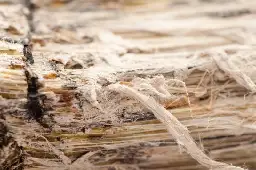
The Government needs to take more action to prevent thousands of people dying from asbestos exposure every year, says IOSH – 25 years on from the deadly material being banned in the UK.
Despite the ban, an estimated 300,000 non-domestic buildings built before 1999 still contain asbestos.
We know that about 5,000 people a year die from asbestos-related diseases every year in the UK. While the cause of their illness was likely exposure from decades ago, we believe that people are still being exposed today, putting them at risk of terminal cancers such as mesothelioma in the years to come.
- Rheumatism sufferers sought relief inside a whalewww.bbc.co.uk Rheumatism sufferers sought relief inside a whale
Climbing inside a whale was once thought to bring relief to rheumatism sufferers, an exhibit at the Australian National Maritime Museum reveals.
Climbing inside the carcass of a whale was once thought to bring relief to rheumatism sufferers, an Australian National Maritime Museum exhibit shows.
Staying inside the whale for about 30 hours was believed to bring relief from aches and pains for up to 12 months.
A rheumatic patient would be lowered inside the carcass of a recently-slaughtered whale "leaving just his or her head poking out ."
One claim for the origins of the practice, which dates back to the late 19th Century, is that a drunk man plunged into the carcass of a whale and emerged hours later apparently free of his rheumatism.
- Study finds silica, metals higher in lungs of previously deployed military veteranswww.news-medical.net Study finds silica, metals higher in lungs of previously deployed military veterans
Since the conflicts that followed 9/11 in 2001, military veterans deployed to areas in Southwest Asia, Iraq, Afghanistan, and the Horn of Africa have been developing respiratory diseases caused by inhaling particulate matter linked to their deployment locations and job duties.

Military veterans deployed to areas in Southwest Asia, Iraq, Afghanistan, and the Horn of Africa have been developing respiratory diseases caused by inhaling particulate matter linked to their deployment locations and job duties. New research published in the International Journal of Environmental Research and Public Health shows levels of silica and other silicates are significantly higher in the lungs of those who have had past deployments compared to normal lung tissue.
Environmental dust storms, local polluting industries and military operations generate airborne hazards, not only in the line of duty, but also during leisure activities and sleep. Military operations frequently contribute to particulate matter burden due to sources such as exhaust from vehicles, aircraft, and heaters, along with smoke from fires, explosive blasts and burn pits. Some military personnel have jobs that expose them to potentially hazardous airborne vapors, such as dusts, gases or fumes.
- LA City Council trio takes aim at lung disease impacting countertop workerswww.dailynews.com LA City Council trio takes aim at lung disease impacting countertop workers
Council members Imelda Padilla, Bob Blumenfield and Monica Rodriguez co-introduced a set of motions Wednesday targeting silicosis, an incurable lung disease caused by inhaling large amounts of crys…

“The alarming rise of severe silicosis-related illness and deaths among stone countertop workers in the San Fernando Valley prompted me to act quickly.”
Researchers from UCLA and UC San Francisco reported last year that about 52 artificial stone workers were diagnosed with silicosis in California — and of those 52 cases, 51 were Latino immigrants. Most were diagnosed between 2019 and 2022. Twenty of the patients had advanced disease at diagnosis, and 10 died. Their median age was 45 years old, with an average work history of 15 years.
- Majority of CO2 emissions linked to 57 producers and countries, report says
The vast majority of planet-warming carbon dioxide emissions since 2016 can be traced to a group of 57 fossil fuel and cement producers, researchers said on Thursday.
From 2016 to 2022, the 57 entities including nation-states, state-owned firms and investor-owned companies produced 80% of the world's CO2 emissions from fossil fuels and cement production, said the Carbon Majors report by non-profit think tank InfluenceMap.
The report found most companies had expanded their fossil fuel production since 2015, the year when nearly all countries signed the U.N. Paris Agreement, committing to take action to curb climate change.
- Scientists create plastic-free vegan leather that dyes itself, grown from bacteriaphys.org Scientists create plastic-free vegan leather that dyes itself, grown from bacteria
Researchers at Imperial College London have genetically engineered bacteria to grow animal- and plastic-free leather that dyes itself.
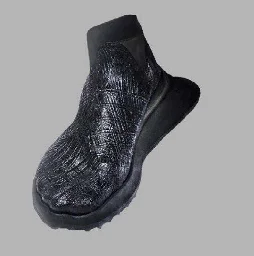
Researchers at Imperial College London have genetically engineered bacteria to grow animal- and plastic-free leather that dyes itself.
In recent years, scientists and companies have started using microbes to grow sustainable textiles or to make dyes for industry—but this is the first time bacteria have been engineered to produce a material and its own pigment simultaneously.
Synthetic chemical dyeing is one of the most environmentally toxic processes in fashion, and black dyes—especially those used in coloring leather—are particularly harmful. The researchers at Imperial set out to use biology to solve this.
- EXPLORING THE ORIGINS OF THE TONGUE-TWISTING LUNG DISEASE PNEUMONOULTRAMICROSCOPICSILICOVOLCANOCONIOSIS
At its essence, pneumonoultramicroscopicsilicovolcanoconiosis is more than just a mouthful; it’s a tale of language, medicine, and the intersection of the two. Coined in 1935 by Everett M. Smith, the then-president of the National Puzzlers’ League, this 45-letter behemoth holds the title for the longest word in the English language published in a popular dictionary, Oxford Dictionaries.
Diving into its etymology, we unearth a blend of ancient Greek and Latin. The prefix “pneumono-” (πνεύμων, pneúmōn in Greek) signifies the lungs, while “ultra” indicates beyond. “Micro” and “scopic” derive from the Greek for small looking, denoting the fineness of the particles involved. The “silico-” part corresponds to silicon, and “volcano” obviously referring to volcano. The suffix “-coni” (κόνις, kónis in Greek) means dust, and “-osis” typically refers to a medical condition. Assembled, these components narrate the invasion of the lungs by minuscule volcanic dust particles.
Despite its elaborate construction, the term is essentially an invented synonym for silicosis
- Silicosis strikes at Australia’s biggest gold mine
Since 2020, the dust problem – which centres around grinders that crush silica-containing rock to allow the precious metal to be extracted – has been highlighted six times by WA safety regulator WorkSafe.
The danger comes when fine silica particles too small to see are inhaled and are lodged in the deepest, tiny reaches of the lung. Hoy said the silica particles were toxic to the cells that try to clear the lungs of debris, so the silica builds up, inflammation leads to scarred tissue, and gradually the lung loses its ability to transfer oxygen into the bloodstream.
“Detecting this as early as possible is so important … that reduces the likelihood of it progressing,” Hoy said, adding that there were no treatments to reverse the scarring.
- Why we need to rethink what we know about dustphys.org Why we need to rethink what we know about dust
You may think of dust as an annoyance to be vacuumed and disposed of, but actually, on a grander scale, it is far more important than most people realize. Globally, dust plays a critical role in regulating our climate, radiation balance, nutrient cycles, soil formation, air quality and even human he...

You may think of dust as an annoyance to be vacuumed and disposed of, but actually, on a grander scale, it is far more important than most people realize. Globally, dust plays a critical role in regulating our climate, radiation balance, nutrient cycles, soil formation, air quality and even human health.
The cycle of dust emission, transport and deposition has positive and negative effects on our environment. Nutrients in deposited dust fertilize our oceans and rainforests. But dust from eroded sediment can also damage plants and trees and disrupt photosynthesis, while dust deposited on ice increases the speed at which it melts.
Variations in dust composition, like mineral type and color, create a complex cocktail of particles injected into the atmosphere. This, in turn, interacts with clouds to influence how sunlight is reflected or absorbed, ultimately regulating Earth's temperature.
So, it is vital we have an accurate understanding of where dust emissions are coming from, in what quantities, how dust is transported across the planet and where it ends up.
- Helmet with vibration sensor for excavator drivers
Research projects, Cooperation agreements
Fraunhofer researchers have developed a helmet with an integrated acceleration sensor for drivers of construction vehicles. The helmet sensor measures harmful vibrations that affect the body. A software analyzes the sensor signals and shows the stress on the affected person. This allows corresponding relief measures to be taken.
A flexible piezo-electret film serves as the sensor. A demonstration model for the Flexeras project will be presented at the joint Fraunhofer booth at the Hannover Messe (April 22–26, 2024, Hall 2, Booth B24).
- Lung cancer does not decrease in line with reduced smoking
Despite the fact that the number of people who smoke has decreased very sharply in Sweden, the number of cases of lung cancer in the population is not decreasing as much as expected. Among women lung cancer has in fact increased. This is shown in a new study at Umeå University, Sweden. The study means that the view of how long smoking affects health may change.
- Scientists Put Tardigrade Proteins Into Human Cells. Here's What Happened.www.sciencealert.com Scientists Put Tardigrade Proteins Into Human Cells. Here's What Happened.
Freeze 'em, heat 'em, blast them into empty space; with survival skills unlike any other organism on the planet, those hardy critters known as tardigrades will only come back for more.

Freeze 'em, heat 'em, blast them into empty space; with survival skills unlike any other organism on the planet, those hardy critters known as tardigrades will only come back for more.
Tardigrades have already shown they can survive hot and cold temperatures and high levels of radiation that would be fatal to human beings, and long periods without any water – normally so essential to life. They can even survive in space.
Previous research has revealed an impressive number of tricks that tardigrades use to stay alive, built up over hundreds of millions of years. Essentially, they're very good at slowing the processes of life right down with the help of CAHS D, and that could be useful in human cells too.
Amazingly, when we introduce these proteins into human cells, they gel and slow down metabolism, just like in tardigrades.
Early signs are promising in several areas, including the way the proteins are smartly activated when environmental stress is present, and deactivated when it isn't.
When the stress is relieved, the tardigrade gels dissolve, and the human cells return to their normal metabolism.
- Hand Sanitizers Could Damage Critical Supporting Cells In The Brainwww.sciencealert.com Disinfectant Chemicals Could Damage Critical Supporting Cells In The Brain
Chemicals found in common household disinfectants, glues, and furniture textiles could damage supporting cells in the brain during critical stages of their development, a new study based on human cell cultures and mice has found.

One of the two chemical classes identified were quaternary compounds. These are used in disinfectant sprays, wipes and hand sanitizers, and personal care products such as toothpaste and mouthwash to kill bacteria and viruses, and can be ingested or inhaled if used incorrectly or in poorly ventilated spaces.
The other class of compounds were organophosphates. Serving as flame retardants, they are commonly found in textiles, glues, and household items such as furniture and electronics and can 'off-gas' into the air of rooms we commonly spend time in.
Being fat-soluble, organophosphates can be absorbed through the skin and potentially make their way into the brain.
- Engineers 'symphonize' cleaner ammonia productionphys.org Engineers 'symphonize' cleaner ammonia production
Among the many chemicals we use every day, ammonia is one of the worst for the atmosphere. The nitrogen-based chemical used in fertilizer, dyes, explosives and many other products ranks second only to cement in terms of carbon emissions, due to the high temperatures and energy needed to manufacture ...

Among the many chemicals we use every day, ammonia is one of the worst for the atmosphere. The nitrogen-based chemical used in fertilizer, dyes, explosives and many other products ranks second only to cement in terms of carbon emissions, due to the high temperatures and energy needed to manufacture it.
The process, called lithium-mediated ammonia synthesis, combines nitrogen gas and a hydrogen-donating fluid such as ethanol with a charged lithium electrode. Instead of cracking apart nitrogen gas molecules with high temperature and pressure, nitrogen atoms stick to the lithium, then combine with hydrogen to make the ammonia molecule.
The reaction works at low temperatures, and is also regenerative, restoring the original materials with each cycle of ammonia production.
- Water allergy: a debilitating but thankfully rare conditiontheconversation.com Water allergy: a debilitating but thankfully rare condition
There is no cure for ‘aquagenic urticaria’, but some promising treatments are on the horizon.

At its core, water allergy is believed to arise from an abnormal immune response triggered by water’s interaction with the skin. Think of your immune system as a vigilant guardian, always on alert for invaders. In aquagenic urticaria, water somehow triggers an alarm response. This leads to the release of substances like histamine – causing hives, welts and itching.
- The Great War And The Cocaine Panic in Britainvolteface.me The Great War And The Cocaine Panic in Britain - Volteface
Although the French accused the Germans of smuggling cocaine in order to deliberately weaken the French race, it was in Britain that the truly nationwide drug panic broke…

Before the war cocaine was a common ingredient in medicines and tonics for hay fever as it cleanses the respiratory track by reducing swelling of the mucosa and nasal discharge.
The most popular American drug, called Ryno’s Hay Fever, the content of which was 99.9 percent cocaine, was touted as the best cure for a clogged, reddened, and sore nose, to be used when it gets “stuffed-up.”
Also the British Burroughs Wellcome & Co. manufactured the already mentioned Tabloid cocaine tablets marketed as perfect for singers and public speakers longing to improve their voices.
Overall, mass-produced cocaine, which was believed to be as harmless as tobacco, had become widespread well before the war, and soldiers were but a minority of its users.
Thus, if the consumption of drugs in Britain developed into a problem, it was a problem not so much of the army alone but of society at large.
- Dust pneumonia
People who had dust pneumonia often died. There are no official death rates published for the Great Plains in the 1930s. In 1935, dozens of people died in Kansas from dust pneumonia. Red Cross volunteers made and distributed thousands of dust masks, although some farmers and other people in the affected areas refused to wear them
- Amyotrophic Lateral Sclerosis and Exposure to Diesel Exhaust in a Danish Cohortacademic.oup.com Amyotrophic Lateral Sclerosis and Exposure to Diesel Exhaust in a Danish Cohort
Abstract. Previous studies have suggested an increased risk of amyotrophic lateral sclerosis (ALS) and other motor neuron diseases for persons in occupatio
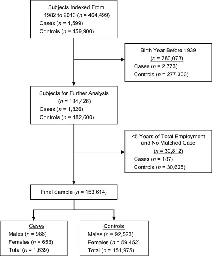
Published 2018
Our study suggests an association between consistently higher exposures to DE and ALS in men, but not in women. These findings support previous reports of associations between ALS and occupations commonly involving DE exposure.
Although our assessment was of occupational exposures, widespread population exposures to DE do occur, particularly from some traffic pollution, though most often at a lower level than the occupational exposures. Studies of exposure to DE in the general population are warranted. Given the widespread nature of DE exposure but the rarity of ALS, an association with DE could suggest that only certain people are sensitive to DE exposure, possibly determined by genetic profile.

